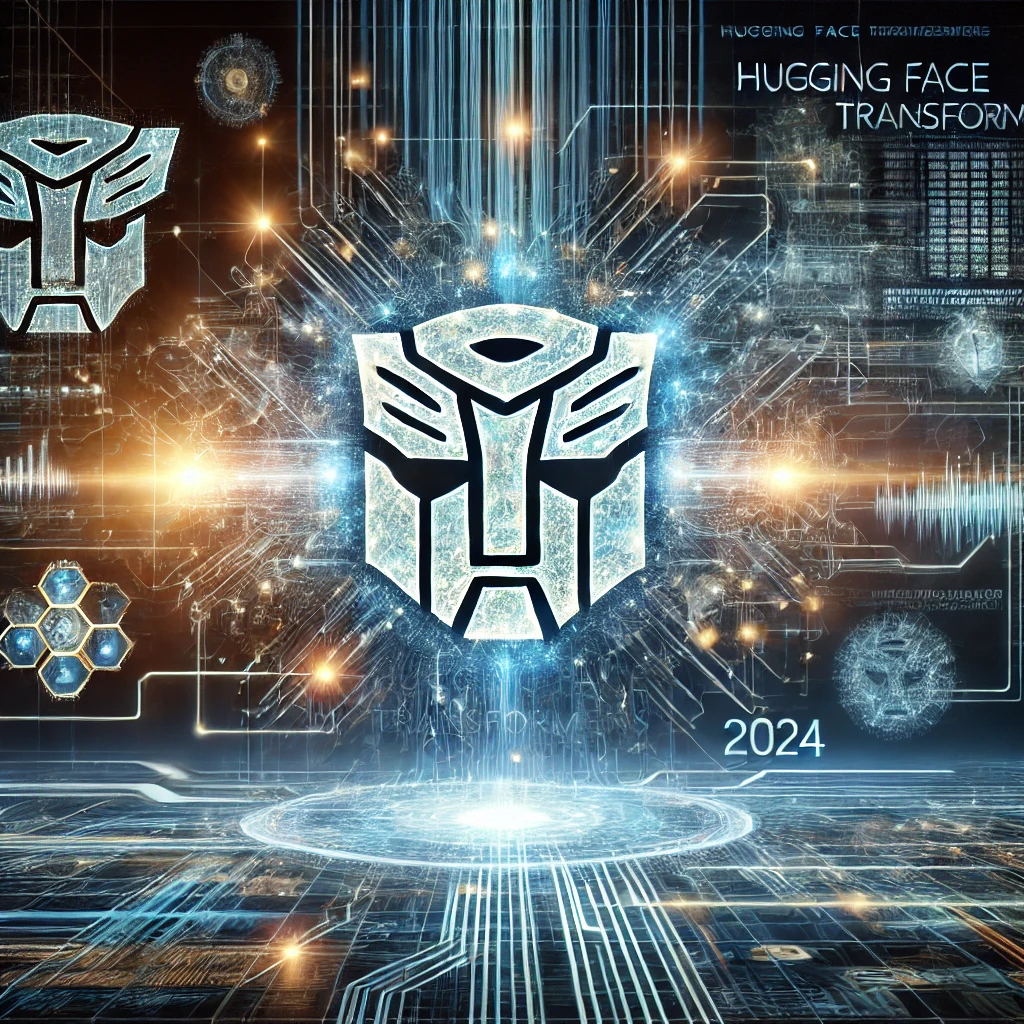
It’s 2024, and Hugging Face Transformers are taking the AI world by storm! Did you know that it is estimated that around 60% of AI researchers now use Hugging Face Transformers in their projects? That’s right, these powerful models are revolutionising how we interact with language-based AI. In this article, we’ll dive deep into the fascinating world of Hugging Face Transformers, exploring their capabilities, applications, and why they’re the talk of the tech town. Get ready to transform your understanding of NLP!
What Are Hugging Face Transformers?
The concept of transformers isn’t entirely new. It was introduced back in 2017 by Google researchers in a paper titled “Attention Is All You Need”. But Hugging Face took this concept and ran with it, developing a suite of tools and models that have become the go-to for many NLP tasks.
Compared to traditional NLP models, Hugging Face Transformers are like comparing a smartphone to a brick phone from the 90s. They’re faster, more versatile, and can handle complex language tasks with ease. Traditional models often struggled with context and long-range dependencies in text. But transformers? They eat that stuff for breakfast.
What really makes Hugging Face Transformers stand out is their ability to understand context. They don’t just look at words in isolation, but consider how they relate to each other in a sentence or even across paragraphs. It’s like they’re reading between the lines, just like we humans do.
Another killer feature is their pre-trained nature. These models have already been trained on massive amounts of text data, which means they come out of the box with a deep understanding of language. This pre-training is a game-changer, especially for organisations that don’t have the resources to train models from scratch.
How Hugging Face Transformers Work
Now, I know what you’re thinking. “This all sounds great, but how do these things actually work?” This section is going to be a little bit technical, but don’t worry I break it down in to manageable chunks.
At the heart of Hugging Face Transformers is something called the transformer architecture. This is a type of neural network that’s particularly good at processing sequential data, like text. The key innovation here is something called the self-attention mechanism.
Self-attention is like giving the model a photographic memory. It allows the model to weigh the importance of different words in a sentence when processing each word. For example, in the sentence “The cat sat on the mat”, when processing the word “sat”, the model pays more attention to “cat” than to “the” or “mat”.
This might not sound revolutionary, but trust me, it is. Previous models, like recurrent neural networks (RNNs), processed text sequentially, which made it hard for them to capture long-range dependencies. Transformers, on the other hand, can look at the entire input sequence at once, making them much more effective at understanding context.
The magic of Hugging Face Transformers happens in two stages: pre-training and fine-tuning. During pre-training, the model is fed massive amounts of text data and learns to predict missing words or next sentences. This gives it a broad understanding of language.
Fine-tuning is where things get really interesting. This is when we take our pre-trained model and teach it to perform specific tasks, like sentiment analysis or question answering. The beauty of this approach is that it requires much less task-specific data than training a model from scratch.
Compared to RNNs, it’s like comparing sports cars to bicycles. They’re faster, more powerful, and can handle much more complex tasks. Plus, they’re easier to parallelise, which means they can take full advantage of modern GPU hardware.
Popular Hugging Face Transformer Models
Now that we’ve got the basics down, let’s talk about some of the star players in the Hugging Face lineup. These models are like the characters from a super hero movie, each having their own superpowers.
First up, we’ve got BERT (Bidirectional Encoder Representations from Transformers). BERT was a game-changer when it was introduced by Google in 2018. It’s bidirectional, meaning it can understand context from both left and right. This makes it incredibly good at tasks like question answering and sentiment analysis.
But BERT was just the beginning. We’ve since seen variants like RoBERTa, which is like BERT on steroids. It was trained with more data and for longer, leading to even better performance. Then there’s DistilBERT, a smaller, faster version of BERT that retains most of its older brother’s capabilities.
Next, we’ve got the GPT series. If BERT is like a really good listener, GPT is like a storyteller. It’s particularly good at generating human-like text. GPT-2 made waves when it was released, with some even worrying it was too good at generating fake news. GPT-3, its successor, is even more impressive, capable of writing essays, answering questions, and even coding, and GPT-4 takes things to an even higher level.
T5 is another interesting model. It treats every NLP task as a text-to-text problem. Whether you’re translating languages or summarising text, T5 sees it all as transforming one piece of text into another. This unified approach makes it incredibly versatile.
Lastly, we’ve got multilingual models. These are like the UN translators of the transformer world. They can understand and generate text in multiple languages, making them invaluable for global organisations.
Applications of Hugging Face Transformers
Now, you might be wondering, “This all sounds great, but what can I actually do with these transformers?” Well, let me tell you, the possibilities are pretty mind-blowing.
First off, we’ve got text classification and sentiment analysis. This is huge for businesses trying to understand customer feedback. Imagine being able to automatically categorise thousands of customer reviews and gauge sentiment. This would take a team of humans many hours to achieve, but with Hugging Face Transformers this can be completed in near real time.
Then there’s named entity recognition and information extraction. This is where transformers really shine. They can identify and categorise entities in text, like people, organisations, or locations. This is invaluable for tasks like automating data entry or analysing large volumes of documents.
Machine translation is another area where transformers are making waves. They’re pushing the boundaries of what’s possible in language translation, getting closer and closer to human-level performance. As someone who’s struggled with language barriers in international business, I can tell you this will make doing business across countries so much easier.
But perhaps the most exciting application is in conversational AI and question answering. Transformers are powering chatbots and virtual assistants that can understand and respond to natural language queries with unprecedented accuracy. Gone are the days of those clunky chatbots that don’t understand the question you are asking, or giving you a response that is nothing like the answer you were looking for. With the power of Hugging Face transformers and access to good quality data, building intelligent, context aware chatbots will be a breeze.
Benefits of Using Hugging Face Transformers
First and foremost, these models offer improved accuracy and performance in NLP tasks. We’re talking state-of-the-art results across a wide range of benchmarks. If you’re in the business of processing and understanding text data, this translates to better insights and more reliable results.
Speed is another major benefit. Transformers are designed to be efficient, both in training and inference. This means you can get your models up and running faster, and they can process new data more quickly. In the fast-paced world of tech, this kind of speed can be a real competitive advantage.
One of the coolest things about Hugging Face Transformers is their transfer learning capabilities. Remember how I mentioned pre-training earlier? Well, this means these models come with a deep understanding of language baked in. You can then fine-tune them for specific tasks with relatively little data. It’s like having a language expert that you can quickly teach to specialise in your specific domain.
This leads to another huge benefit: the reduced need for large labeled datasets. In the past, to train a good NLP model, you’d need mountains of labeled data. With transformers, you can achieve impressive results with much smaller datasets. This is a godsend for organisations working with niche or proprietary data.
In a future article I will be looking at Hugging Face datasets and how these can be used to fine tune, or even train your own models. Remember to check back for this article.
Challenges and Limitations
Now, it would be wrong of me not to talk about the challenges and limitations that Hugging Face transformers have. Remember its still early days for this technology and it is still evolving at a rapid pace.
First off, let’s talk about computational resources. These models are hungry beasts. Training and running large transformer models requires some serious hardware. We’re talking high-end GPUs or even specialised AI accelerators. For small organisations or individual developers, this can be a significant barrier to entry.
Then there’s the issue of potential biases in pre-trained models. These models learn from the data they’re trained on, and if that data contains biases, the model will likely reflect those biases. This is a big concern, especially when these models are used for decision-making processes that affect people’s lives.
Ethical considerations are another big topic in the world of AI language models. As these models become more advanced, questions arise about privacy, misinformation, and the potential for misuse. It’s crucial that we develop and use these technologies responsibly.
There’s also the challenge of interpretability. While these models perform incredibly well, it’s often hard to understand exactly how they arrive at their outputs. This “black box” nature can be problematic in applications where explainability is important. It is also important to understand any regulatory or compliance requirements that you may have when implementing any models that use pre-trained “black box” style models.
The good news is that there’s a lot of ongoing research to address these limitations. From developing more efficient architectures to creating methods for debiasing models, the field is constantly evolving.
Getting Started with Hugging Face Transformers
If you’re feeling inspired and want to dip your toes into the world of Hugging Face Transformers, you’re in luck. The Hugging Face team has done an amazing job of making their technology accessible.
Getting started is surprisingly straightforward. The first step is installation, which can typically be done with a simple pip install command. The Hugging Face Transformers library is well-documented, with clear instructions for setup and basic usage.
Once you’ve got everything installed, you’ll find that the API is quite intuitive. Loading a pre-trained model and using it for inference can often be done in just a few lines of code. It’s like having a superpower at your fingertips.
Fine-tuning models for specific tasks is where things get really interesting. Hugging Face provides tools and tutorials to guide you through this process. Whether you’re working on text classification, named entity recognition, or any other NLP task, there’s likely a pre-trained model you can use as a starting point.
One of the best things about the Hugging Face ecosystem is the community. There’s a wealth of resources available, from detailed documentation to active forums where you can get help. It’s like having a whole team of NLP experts on call.
Future of Hugging Face Transformers
As we wrap up, let’s take a moment to look ahead. The future of Hugging Face Transformers is looking bright, and I’m excited to see where this technology goes.
We’re likely to see continued improvements in model architectures and training techniques. This could lead to even more powerful and efficient models. Imagine being able to run GPT-4 level models on your smartphone!
Integration with other AI technologies is another exciting prospect. We’re already seeing transformers being combined with computer vision models for tasks like image captioning. The possibilities for multimodal AI are mind-boggling.
As for predictions, well, unfortunately I don’t have a crystal ball (otherwise I would have bought 10,000 BItCoin when they we below $1), but I think we’re going to see NLP become increasingly ubiquitous. We’re moving towards a world where interacting with AI through natural language will be as common as using a touchscreen is today.
In conclusion, Hugging Face Transformers are more than just a cool technology – they’re a glimpse into the future of how we’ll interact with machines. Whether you’re a developer looking to leverage these tools, or a business leader trying to understand the potential impact, it’s worth paying attention to this space. The NLP revolution is here, and Hugging Face Transformers are leading the charge.
Conclusion
As we’ve seen, Hugging Face Transformers are not just another AI buzzword – they’re a game-changer in the world of natural language processing! From revolutionising how we interact with machines to opening up new possibilities in language understanding, these models are shaping the future of AI. Whether you’re a seasoned developer or just starting your AI journey, now’s the time to dive into the exciting world of Hugging Face Transformers. So, what are you waiting for? Start exploring, experimenting, and transforming your NLP projects today!





